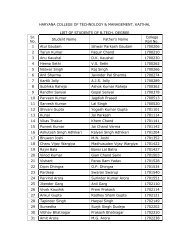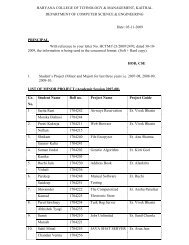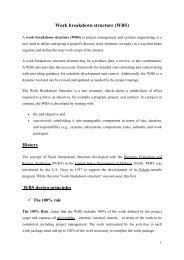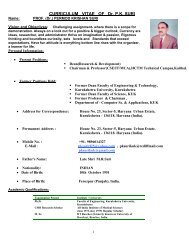Create successful ePaper yourself
Turn your PDF publications into a flip-book with our unique Google optimized e-Paper software.
LECTURE NOTES OF ADVANCED DATA STRUCTURE (MT-CSE 110)<br />
The difference of two matrices is also defined only when the<br />
two matrices are compatible. The difference of m*n matrix A is a third m*n<br />
matrix C such that<br />
Cij=aij‐bij (for 0 ≤ i ≤ m‐1 and 0 ≤ j ≤ n‐1).<br />
The difference of two matrices is the matrix, which (i,j)‐th entry is equal to the<br />
difference of the (i,j)‐th entries of two matrices:<br />
(C) MULTIPLICATION:‐<br />
The product, A*B, of a m*n matrix A and a q*p matrix B is<br />
defined only when the number of columns in A equals the number of rows in B,<br />
i.e., n=q. When n=q, the product is a m*p matrix C with the property<br />
Cij =Σ aik bjk (for 0 ≤ i ≤ m‐1 and 1 ≤ j ≤ n‐1).<br />
In matrix, the multiplication of two matrices is a bit more complicated:<br />
• Two matrices can be multiplied with each other even if they have<br />
different dimensions, as long as the number of columns in the first matrix<br />
is equal to the number of rows in the second matrix.<br />
• The result of the multiplication, called the product, is another matrix with<br />
the same number of rows as the first matrix and the same number of<br />
columns as the second matrix.<br />
• The multiplication of matrices is not commutative, this means, in general<br />
that .<br />
• The multiplication of matrices is associative, this<br />
means .<br />
Prepared By :<br />
Er. Harvinder Singh<br />
Assist Prof., CSE, H.C.T.M (Kaithal) Page ‐ 123 ‐







